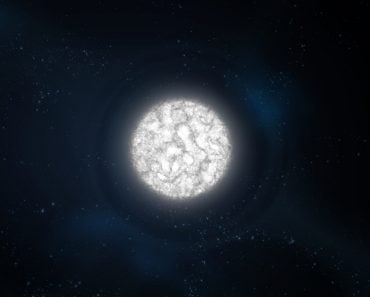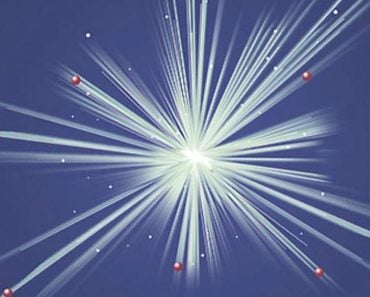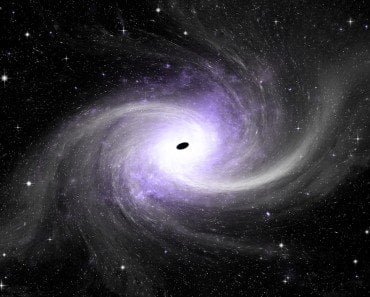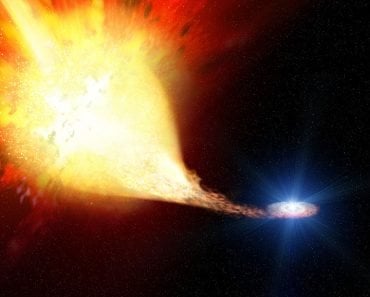Table of Contents (click to expand)
A neutron star is the densest object in the universe.
Everything you have ever seen or touched – even the hardest metals – is not really as dense as you think it is. Everything is made up of matter, but matter is largely made up of nothing! No, I’m not trying to trick you! If you reduce an object to its atomic state, the thing you will notice most is the huge amount of empty space within it.
If you increase the size of an atom to that of a football pitch, the nucleus (made up of neutrons and protons) would be sitting right at the center of the pitch, roughly the size of an average marble. The electrons, however, would be at the very edge of the field, invisible to the naked eye. That’s right! If you can picture that, then you realize that most of an atom is just empty space!
However, what if this empty space was filled with more marbles? If you think that’s a rhetorical or nonsensical question, you’re wrong. You see, the universe is much weirder than you could possibly imagine, full of infinite possibilities that would leave the average human scientist baffled beyond comprehension. For example…. Neutron Stars.
Recommended Video for you:
The Birth Of A Neutron Star
When stars with a mass 8 to 20 times greater than the Sun die, something very strange happens. The star explodes as a supernova, but its core still remains intact. If the core has more than 1.4 solar mass, it starts to collapse. The immense gravity presses the core into itself, along with all its subatomic particles, such as protons and electrons, combining to form an incredibly tight grid of plain neutrons.
This collapse takes a fraction of a second, but the change in the core’s structure is drastic. The neutrons are so tightly packed that the core shrinks to a tiny sphere only 20 km in diameter, yet retaining its original mass. Remember that the Sun is 300,000 times more massive than the Earth. Now, imagine a star that is 500,000 times the mass of Earth crunched down to the size of a small city!
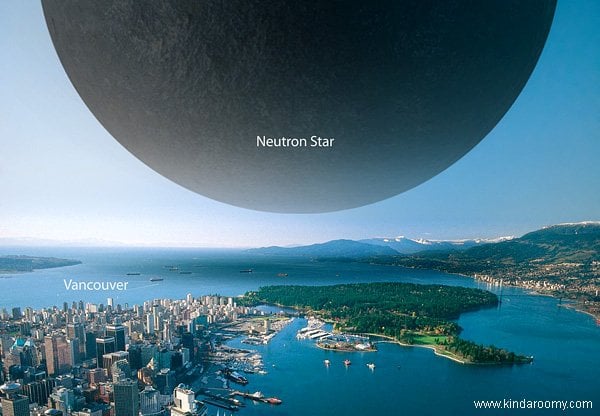
So, there you go! A neutron star is the most intensely dense object in all the universe. Of course, the argument can be made that a black hole is the most dense, but considering that a black hole is technically beyond the event horizon, it is neutron stars that get the top spot for the being the ‘most dense’.

Here are the top 5 reasons why neutron stars are the densest objects in the universe:
Density
In a neutron star, all of the empty space that matter usually has is completely occupied by neutrons, held together by the star’s gravity, very much against their will. This makes the star so incredibly dense that a cubic centimeter of neutronium – what the matter of neutron stars is usually called – would be roughly 400 million tons! To put some perspective on this, let’s take an elephant as an example. An average African elephant weighs about 4 tons. If you try and squeeze 100 million elephants into a sugar cube, you would achieve the same density as neutronium!

Gravity
A star this dense would obviously have a crushingly large gravitational pull. If you stood on the surface of a neutron star, you would be crushed down to your atomic level! However, let us, for the sake of the argument, assume that you manage to stand on a neutron star’s surface. You would end up being 100 billion times heavier! I weigh around 52 kilograms (510 Newtons) on this beautifully buoyant blue planet, but on a neutron star, I would weigh 5200 billion kilograms (50995 billion Newtons)! Which is 1.4 billion times heavier than an elephant!

Velocity Of Rotation
A neutron star is the corpse of a once magnificently large star that took its own sweet time while rotating. However, after the supernova explosion, the remaining dense core retains the same angular momentum of the larger star. If the original star took weeks to rotate, then its neutron star would alternatively rotate several times per second! The same technique is used by an ice skater when she pulls back her arms to increase the velocity of her spin.

Pulsars
A really fast neutron star emits a kind of narrow radiation beam. These beams spin along with the star, sort of like a astronomical lighthouse. From Earth, we detect these beams as a pulse. Such neutron stars have thus been named pulsars. The spin of these pulsars are so stable that they can act as very accurate cosmic clocks!
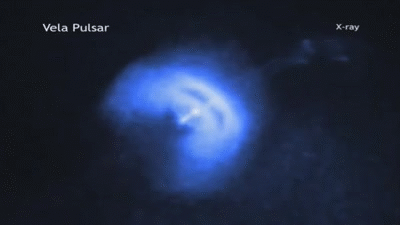
Some pulsars have been detected to be in binary systems as well, which means that they have another star orbiting them. The pulsar then feeds off the energy and matter of its neighbor to spin even faster. Some of these pulsars spin hundreds of times per second!
Magnetic Field
To say that neutron stars have strong magnetic fields would be a gross understatement. An average neutron star’s magnetic field could be several trillion times stronger than the Sun! However, some neutron stars have greater magnetic fields than others.
Magnetars are basically neutron stars on steroids. They are so massive that their magnetic fields could be a quadrillion times more than the Sun! They are comparatively rare, making up only 10% of all neutron stars. The magnetic field of a magnetar is so strong that it can distort the shape of atoms! This is why we can deem a magnetar to be too unstable to survive for very long. The magnetic field slows down the spin of the star, eventually leading to its demise. Magnetars are doomed to die quickly, within about 10,000 years, which is just a blip on the universal scale.

The gravitational pull and the rapid rotations of a magnetar severely affect the integrity of its crust. The crust occasionally snaps, the same way our planet’s crust slips and causes earthquakes; these events are thus aptly termed starquakes. If the surface moves even a centimeter, the resulting energy release leads to a massive explosion!
These starquakes directly affect the magnetic field of the magnetar, leading to a magnetar flare, which is like a solar flare, but much stronger. How much stronger you ask? Trillions of times! In a fraction of a second, a magnetar can release more energy than what the Sun can send out in a quarter of a million years!
In 2004, satellites orbiting the Earth detected a huge burst of X-ray radiation, so much so that they were blinded by the blast! Even the Earth’s outer atmosphere was partially ionized by this event. Its source was pinpointed to a starquake on magnetar SGR1806-20. Believe it or not, this magnetar was halfway across the galaxy… roughly 50,000 light years away!
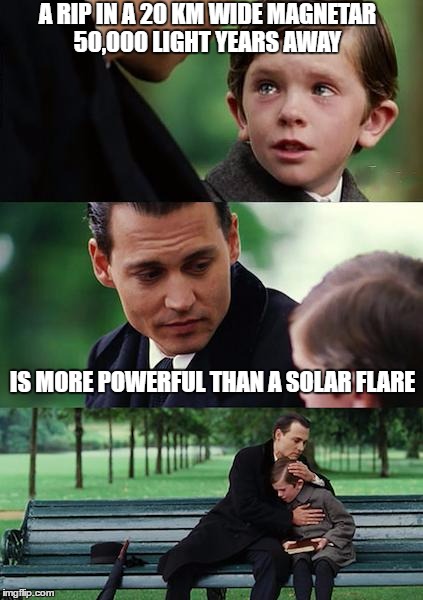
The more we study neutron stars, the more remarkable they seem. Even today, we’re still discovering new things about them, despite decades of research. Who knows what else we’ll learn about the universe at this rate!


